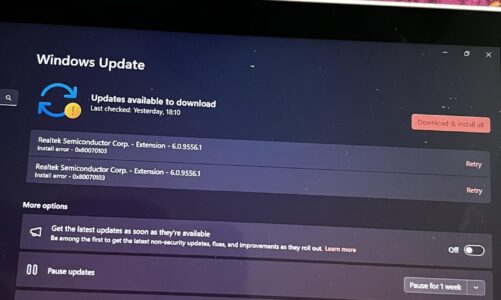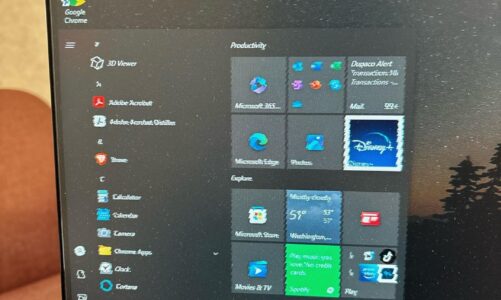File Explorer in Windows 11, once a familiar friend, can suddenly become a stranger. Gone are the reassuring ribbon and tabs, replaced by a barebones interface that leaves you feeling lost. Fear not, intrepid explorer! This guide will equip you with the knowledge and tools to reclaim control and navigate the ever-shifting landscape of your digital domain.
Missing Ribbon and Tabs in File Explorer on Windows 11
Rejuvenation Through Re-registration:
First, consider a digital exorcism: re-registering all apps. Often, File Explorer’s hiccups stem from a glitch within the SystemApps folder. Don’t underestimate this simple step – it’s the technological equivalent of a good night’s sleep, sometimes all it takes to banish gremlins and restore order.
Venturing Beyond the Familiar:
While File Explorer may be the default, it’s not the only map to your digital world. Alternative file managers abound, but proceed with caution. Some are bloated behemoths, especially on resource-constrained ARM processors. However, the “Files App” from the Windows Store offers a refreshing oasis: a clean interface with the option to ditch tabs altogether.
Qttabbar Tabs: A Functional Upgrade:
For those who find native tabs clunky, Qttabbar offers a symphony of customization. These sleek, customizable tabs elevate File Explorer’s functionality and aesthetics, transforming it into a smooth, personalized workspace. It’s a must-try for power users who crave a tailored experience.
Silencing the Tab Chorus:
If native tabs are your nemesis, Vivetool comes to the rescue. With a few strategic keystrokes in CMD (executed with administrator privileges), you can silence the tab chorus with the command:
vivetool /disable /id:37634385
Should File Explorer misbehave, a system restart or the “vivetool /fullreset” command will restore order.
Beyond ID 37634385: Experimentation is Key:
Some users report success by silencing both IDs 37634385 and 36354489. While the exact reasons remain shrouded in code, experimentation can be your key to unlocking a harmonious File Explorer experience. Remember, Windows 11’s customization options are a double-edged sword – wield them wisely!
Shortcuts: Your Master Key:
For those who prefer a tab-less tango, shortcuts become your dance partners. Mastering the CTRL + SHIFT + Middle Click combo for opening folders in new windows is like learning the first step of a graceful waltz. Consider creating macros or programming keys on your keyboard or gaming mouse to turn File Explorer into a responsive orchestra of shortcuts, rendering tabs obsolete.
StartAllBack: A Controversial Waltz Step:
StartAllBack offers a tempting shortcut to revert File Explorer to its previous iteration. However, approach with caution. Its compatibility with Windows 11 is a tango with potential pitfalls, and extensive changes can destabilize your system. Prioritize the built-in options and trust Microsoft’s response to user feedback – after all, they’re the ones composing the music.
Modding and Customization: A Word of Caution:
As a seasoned Windows modder, I offer a sage warning: tread lightly when modifying system files and utilizing third-party apps. The allure of customization can be a seductive siren song, but remember, stability is the rhythm that keeps your digital world dancing smoothly. Stick to built-in tools and hardware functions for a cleaner, more reliable performance.
Conclusion: Embrace Change, Conquer Challenges:
Windows 11 is a constant dance of evolution, and adapting is key. Whether you’re restoring the familiar or reinventing your workflow, this guide equips you with the tools to navigate File Explorer’s ever-changing landscape. Choose your solutions wisely, prioritize stability, and remember – you’re the choreographer of your digital experience. So, take the lead, embrace change, and conquer your Windows 11 journey!




